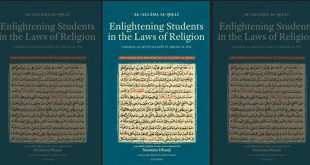Allama Sayyid Jaʿfar Murtaḍā al-ʿĀmilī a religious scholar, an expert in the history of Islam and Shiism, a Shiite biographer, and a scholar of the Islamic seminary of Qom and Najaf passed away at the age 75 in the capital Beirut.
Al-Sayyid Ja’far Murtada al-‘Amili was born on Safar 25, 1364 (February 9, 1945) in the village ‘Ayta l-Jabal 110 km away from Beirut south of Lebanon. His paternal lineage goes back to al-Husayn Dhu l-Dam’a, the son of Zayd the son of Imam al-Sajjad (a).
His Education
He began his informal education with his father, who was a teacher. In 1382/1962, he migrated to Najaf in order to study religious disciplines. He resided in the Seminary School of Ayatollah Burujirdi and seminary of Najaf. In 1388/1968, he moved to Qom. In the seminary of Qom, he first studied the rest of his intermediate courses with Ayatollah Mir Muhammadi. He then attended the lectures of scholars such as Sayyid Musa Shubayri Zanjani, Fani, Murtada Ha’iri Yazdi and Mirza Hashem Amuli. In the meanwhile, he studied historical and theological issues of Shiism.
His Scholarly and Social Activities
Qom: Remarkable activities of Ja’far Murtada during his stay in Qom was his research about the history and beliefs of the Shi’a, the establishment of “Muntada” or the “Seminary of Jabal ‘Amilis”, and teaching master students at Tarbiat Modarres Univeristy in Qom. During his years of teaching, he was a research adviser of Lebanese students and facilitated their education in Qom. During twenty five years of stay in Qom, Murtada sponsored and educated Lebanese students, supported the ideological foundations of the Islamic Revolution, and wrote about the foundations of government by appealing to the practice of Ahl al-Bayt (a).
Lebanon: Late in 1993 he returned to his homeland, Lebanon, after twenty five years of stay in Qom. He continued his research and teaching in southern Lebanon—which was occupied by Israeli regime at the time. In addition to his research in history and the foundation of a research center in Beirut, he held different assemblies for Shiite youths in Lebanon, thus training a generation of religious activists among Lebanese Shi’as. One of his main educational activities was the foundation of a Shiite seminary in Beirut in 1998. During years of his stay in Lebanon, he defended imamate and wilaya and constantly tried to reply to objections to Shiite principles.
His Prophetic Biography and Book’s Writing Style
Al-Sayyid Ja’far Murtada is a Shiite historian whose expertise is the early Islamic period. He has revived Islamic history within Shiite seminaries. His historical works is characterized as follows:
- Ijtihadi approach to the study of history,
- Drawing upon historical facts to defend Shiite theological principles and criticize Sunni theological foundations,
- Wide-ranging searches,
- Precise assessments,
- Intelligently tracing historical events to their origins,
- Explicit specifications of fabrications and distortions,
- Disclosing people who have provided dishonest accounts of history,
- Profound knowledge of historical sources,
- Fluent writing and a peculiar organization of contents.
- His work is not edited by content editors—all his work thus represents his own style of writing.
His Works
Al-Sayyid Murtada has written some books about the history of Islam and Shiite beliefs, including:
Al-Sahih min sirat al-Nabi al-A’zam:
This book that is al-Sayyid Ja’far Murtada’s most important work, is about history of Islam and the Prophet’s (s) tradition. Regarding criticism of hadiths narrated the Prophet’s tradition, this book is outstanding. The author has tried to purify the written works of the Prophet’s (s) tradition from unauthentic hadiths, doing his utmost to author a history based on reliable hadiths after being critical of former hadith references. Taking a special and Shi’a look at the Prophet’s (s) tradition and his history into consideration, Ja’far Murtada utilized numerous references of both Shi’a and Sunni (1683 books) to restore the narrated Prophet’s (s) tradition. At first, this work was released gradually and one by one up to eleven volumes and currently it’s been reached to thirty five volumes altogether. The early volumes were published first by Islamic Publications Office and republished repeatedly in upcoming years. Furthermore, this book had the chance to win Iran’s book of the year awards.
Ma’sat al-Zahra’ (a)
This book has been authored about incidents of the late life of Lady Fatima (a). The writer attempted to quell the misgivings raised about Lady Fatima’s (a) life and martyrdom. According to the Farsi translation of the book, titled as ranj-ha-ya Hadrat Zahra’ (Lady Zahra’s (a) pains), the book aimed primarily to relieve doubts of Al-Sayyid Muhammad Husayn Fadl Allah.
 Ijtihad Network Being Wise and Faithful Muslim in the Contemporary World
Ijtihad Network Being Wise and Faithful Muslim in the Contemporary World
